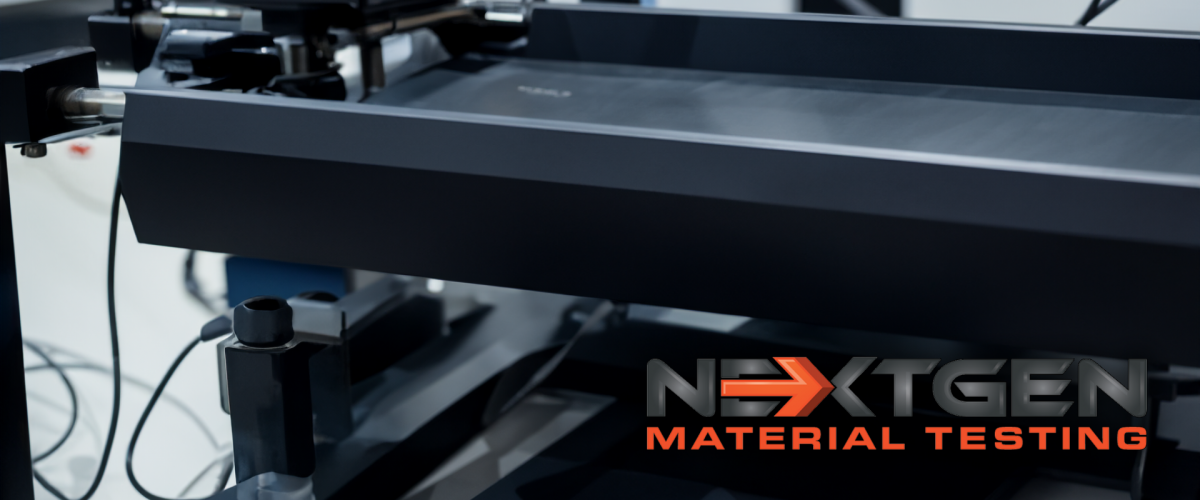This comprehensive review will focus on the DWT-1800 Computer Controlled Drop Weight Impact Testing Machine from NextGen Material Testing Inc. We will cover its features, usability, and applicability in material testing and quality assurance, providing a comprehensive understanding of its functionalities and applicability in the material testing sector for engineers, scientists, and industrial professionals.The DWT Computer-Controlled Drop Weight Impact Testing Machine is a material testing tool, which is used to assess material durability under specific impact conditions through controlled computational mechanisms.
These machines analyze how materials, both metallic and non-metallic, respond to impact stress, generating valuable data on resilience, durability, and safety applications. By applying a force to a test specimen through a calculated drop weight, the material’s reaction is recorded, all under stringent computer-managed settings. This practice is critical in industries like automotive and aerospace, where materials are regularly subjected to dynamic stresses and abrupt loads. Thus, engineers are able to predict the reliability and lifespan of materials.
Moreover, ensuring materials’ strength and reliability is vital in contemporary engineering and design. This prevents product failures and enhances product safety and quality. Hence, material impact testing is an essential procedure for material property verification and prevention of potential operational failures in practical applications.
Analyzing Impact Testing Through the Perspective of the DWT-1800 Drop Weight Impact Testing Machine
As we explore the complexities of impact testing, we find that it can be integrated in any sector. The DWT-1800 Computer Controlled Drop Weight Impact Testing Machine, notably, stands as an example to advancements in this domain. It is a valuable tool for assessing material durability against impact forces. Let’s examine the significance of impact testing along with how machines like the DWT-1800 contribute to its success.
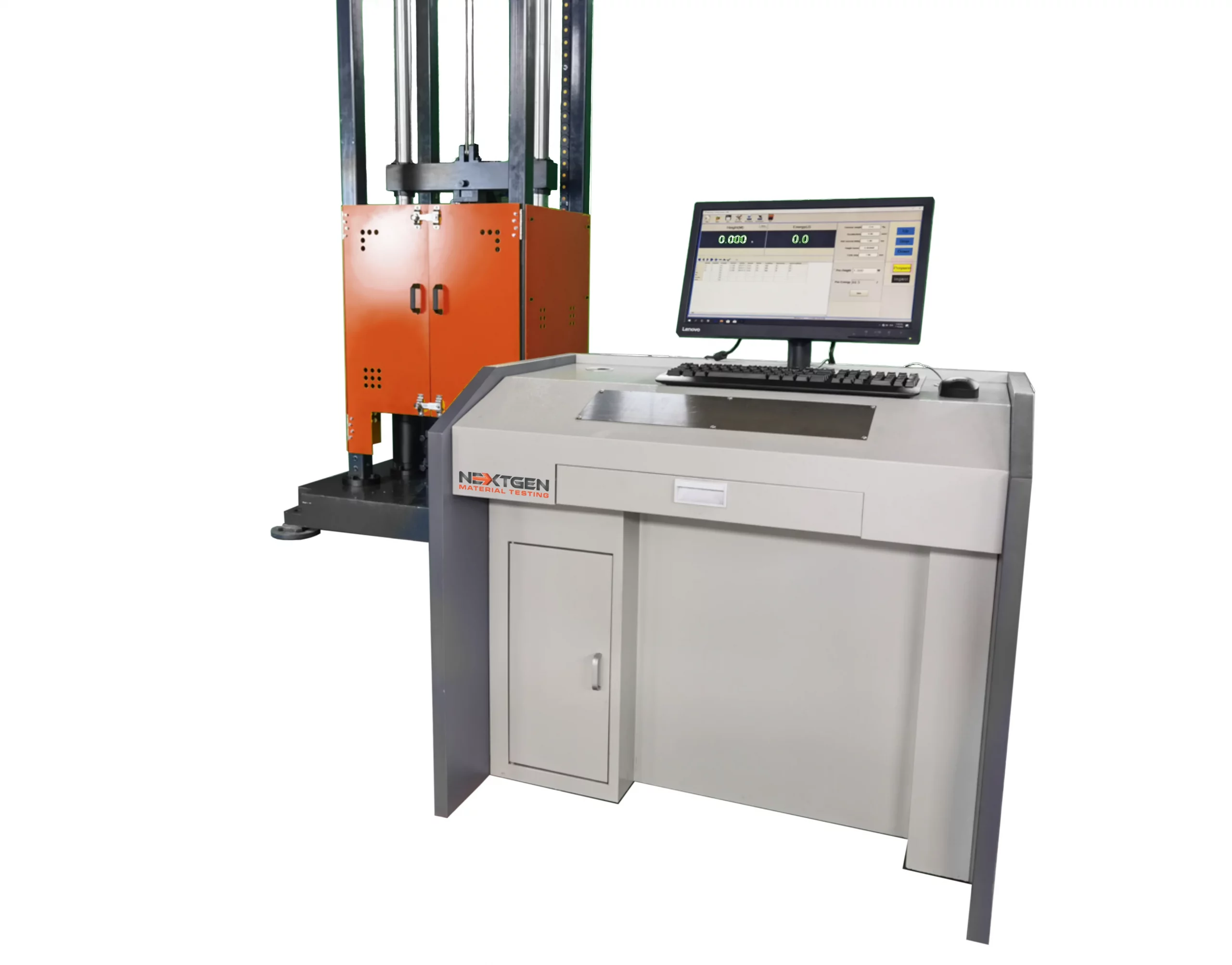
Ensuring Material Durability and Reliability
The in-depth impact testing facilitated by DWT-1800 is crucial in validating materials’ ability to sustain in stressfull environments. The main use of the DWT-1800, for instance, is simulating real-world impact conditions, providing data that can be instrumental in refining material properties, allowing them to meet robust demands of sectors like automotive and construction.
Compliance with Industry Standards
Consider a world where materials, especially those involved in critical applications, were not required to undergo standardized testing. The number of catastrophic events due to material failure would be extremely high. Utilizing impact testing machines, like the DWT-1800, enables manufacturers to rigorously test their materials to comply with globally recognized standards such as ASTM, UL or ISO. This ensures not only compliance but also promotes a trustful relationship with customers through material safety and high performance. Moreover, compliance with standards like UL is particularly crucial in electrical and safety applications where material failure risks are significant. These standards, which we will discuss in more detail in the following section, provide rigid benchmarks that materials must meet to ensure safety, reliability, and quality.
Mitigating Financial Losses
The statistics emphasize the importance of the issue of financial losses. According to a study published in “Materials & Design”, the economic impact of material failure, in some instances, has resulted in millions of dollars in losses due to structural damages and system breakdowns. Impact testing, especially using advanced machines like the DWT-1800 – Computer Controlled Impact Testing Machine, becomes vital and cost-efficient. It offers a method to identify and address potential risks before they escalate into financially costly problems.
Protecting Brand Reputation
Nowadays, there is no doubt that a brand’s reputation is closely connected with quality and reliability. This is where top-of-the-line testing machines like DWT-1800 have a great deal to offer. By ensuring that materials undergo rigorous testing, and utilizing the precise and accurate data generation capabilities of such advanced machinery, brands solidify their commitment to quality.
Enhancing Safety
In the manufacturing and construction industries, safety is an uncompromising pillar. The American Society of Safety Professionals is also of the opinion that material failure, especially in sectors like aerospace or automotive, can lead to serious safety incidents. Thus, by following a stringent impact testing protocol, with the help of the DWT-1800 – Impact Testing Machine, manufacturers can validate that their materials will withstand specified impact forces, providing the necessary confidence that safety will be assured.
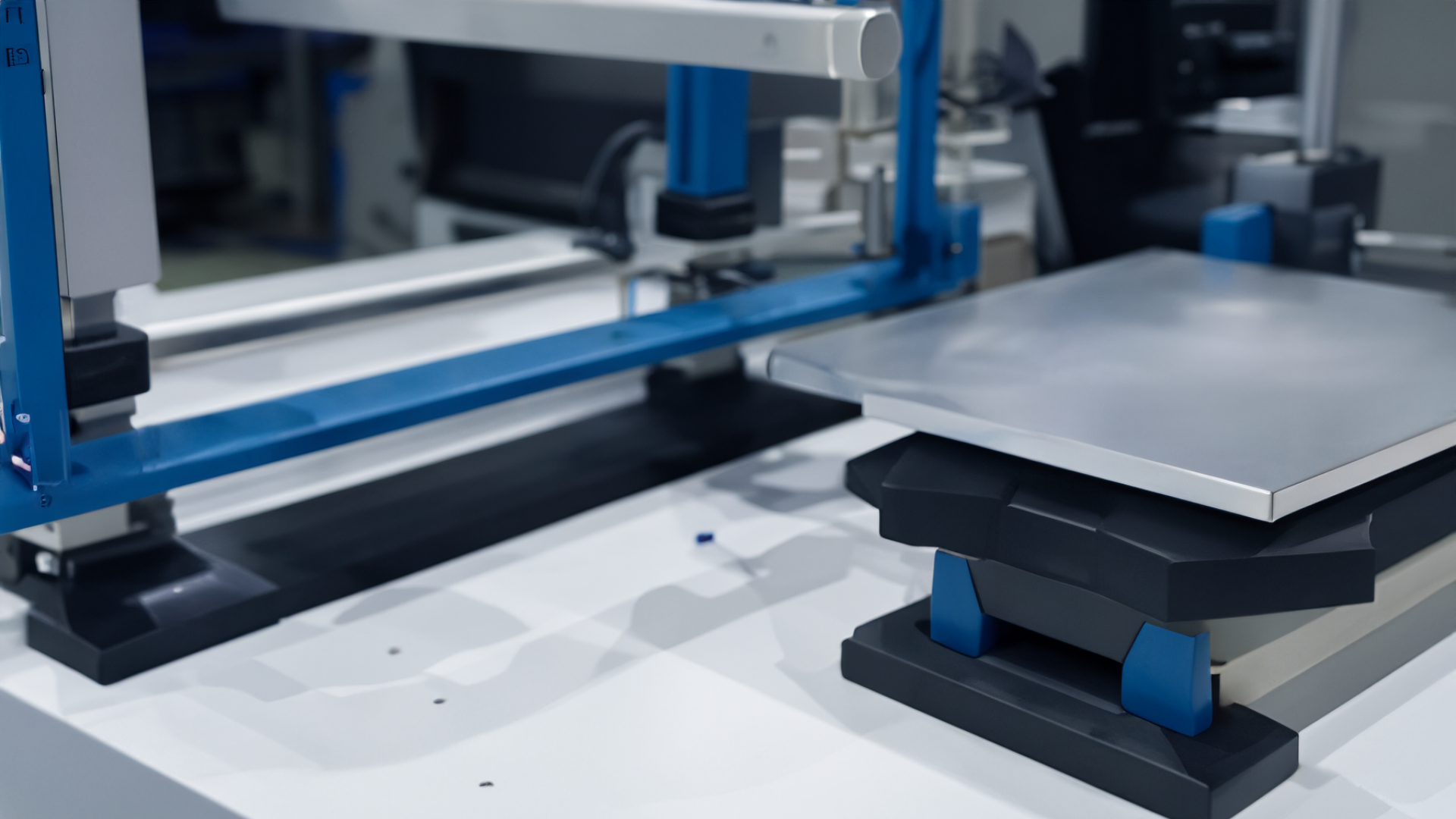
Innovation and Material Development
Material science evolution, supported by testing tools like those provided by machines such as the DWT-1800, is a driving force behind innovation. Understanding the nuances of how materials respond to varied impact forces enables the development of novel materials, pushing boundaries, and introducing a range of new possibilities across diverse applications and technologies.
Standards Applicable to the DWT-1800 Drop Weight Impact Tester
The process of navigating through various standards can be complex, but it is an essential part of material testing. Compliance with Underwriters Laboratories (UL) standards can be achieved utilizing the DWT-1800 Computer Controlled Drop Weight Impact Testing Machine. Let’s examine a few UL standards relevant to metal testing and explain their relevance and necessity in various industries in the following sections.
UL 651 – Standard for Schedule 40, 80, Type EB and A Rigid PVC Conduit and Fittings
This standard applies to Schedule 40, 80, Type EB and A Rigid PVC Conduit and Fittings. It sets guidelines and requirements for materials, workmanship, properties, and dimensions. These guidelines are critical for ensuring safety, reliability, and consistency in rigid nonmetallic conduit.
UL 1 – Standard for Flexible Metal Conduit
UL 1 deals with the standard for Flexible Metal Conduit, ensuring that these conduits, when installed and used in accordance with the National Electrical Code (NEC), will not result in an undue fire hazard. It offers a framework for the construction, electrical continuity, and temperature-related specifications of metal pipes.
UL 360 – Standard for Liquid-Tight Flexible Metal Conduit
The UL 360 standard defines specifications for liquid-tight flexible metal conduits, ensuring their reliability and safety under various conditions and settings. It contributes to the conduit’s effectiveness in safeguarding electrical wiring systems, particularly when liquid infiltration is a potential problem.
UL 1660 – Standard for Liquid-Tight Flexible Nonmetallic Conduit
This standard is centered on liquid-tight flexible nonmetallic conduits, ensuring that they can securely house and protect conductors or cables while maintaining their integrity against liquid permeation, leading to more reliable electrical installation in environments where exposure to liquids is a pertinent concern.
UL 797 – Standard for Electrical Metallic Tubing
UL 797 sets standards for electrical metallic tubing – steel, ensuring they meet safety standards and adequately protect electrical wires, while also ensuring their own structural integrity under stress, and the safe passage of conductive cables through different environmental conditions and usage scenarios.
UL 6 – Standard for Electrical Rigid Metal Conduit
Focusing on electrical rigid metal conduits – whether steel or aluminum, UL 6 establishes specifications and guidelines related to their construction and performance under varied conditions. This ensures electrical cables and conductors are safe, reliable, and durable.
UL 1242 – Standard for Intermediate Metal Conduit
UL 1242 refers to intermediate metal conduits – steel, aluminum, and red brass. It sets forth the criteria related to its construction, ensuring safe and reliable passage and protection of electrical cables and conductors in a variety of applications.

Additional Standards
-
UL1569: Applies to metal-clad cables and cables with a grounding conductor, ensuring they meet the required safety standards for construction and performance.
-
UL2239: Deals with hardware for conduit, tubing, and cable, ensuring their safety and sustainability under different environmental and operational conditions.
-
UL514C: Focuses on establishing safety and performance standards for nonmetallic outlet boxes and flush-device boxes, ensuring they securely enclose and protect electrical connections while withstanding various environmental conditions.
-
UL514D: Focuses on covers and outlet boxes for electrical applications, ensuring they provide secure housing and protection for electrical components, meeting safety and performance specifications.
In conjunction with these standards, conduits and related components are required to meet rigorous safety and performance criteria, ensuring reliable operation in a variety of environments and usage scenarios. The importance of material reliability is particularly evident in industries where operational safety and efficacy are directly related. In addition to complying with these standards, the DWT-1800 also provides a testing platform that permits comprehensive validation of materials, ensuring they are able to withstand anticipated impact forces and are in compliance with industry standards.
Integrating Standards with Impact Testing
The use of the DWT-1800 Computer Controlled Drop Weight Impact Testing Machine from NextGen Material Testing Inc. ensures that the materials utilized in manufacturing conduits, fittings, and other related products meet and exceed the standards set by UL, providing safe and reliable products for the electrical industry and various other applications.
By meeting these standards in manufacturing protocols, industries ensure the safety and reliability of their products but also fortify their position on the market. Compliance with standards drives industries towards creating products that stand the test of time and rigorous usage, safeguarding both the user and the environment from potential risks and failures.
Comprehensive Description of the DWT-1800 Drop Weight Impact Tester
The DWT-1800 Computer Controlled Drop Weight Impact Testing Machine stands as a technological innovation in the field of impact resistance testing for various materials, including both metallic and non-metallic types. This machine’s functionality does not limit itself to general impact testing. It is specifically designed to determine the non-plastic transformation temperature of ferritic steel, enveloping a variety of forms like plates, profiles, cast steel, and forged steel.
Underpinning its operational efficiency is a set of features and specifications. These features include a maximum impact energy of 1800J, a maximum permissible weight of 600lbs / 272kg, and a maximum hammer lifting height of 10.99ft / 3.35m. But its appeal does not lie in its raw specifications. Rather, it’s the synergy of these capabilities with supplementary virtues like adaptability, user-friendly interface, and minimal maintenance.
With computer control at its core, the DWT-1800 eliminates most human error, ensuring repeatable and reliable test results. The emphasis on computer control allows for precise alignment with testing requirements. This enables users to meticulously tune testing parameters and collect data with impeccable accuracy and consistency.
Moreover, the DWT-1800 isn’t strictly a tool. It’s a comprehensive solution for a wide range of applications where understanding materials’ impact resistance plays an important role. In contexts where materials might be subjected to sudden stresses or impactful forces, this machine provides crucial data that can affect not only material selection but also design considerations and safety protocols.
Technical Specifications of the DWT-1800 Drop Weight Impact Testing Machine
The DWT-1800 Computer Controlled Drop Weight Impact Testing Machine offers remarkable versatility and reliability in impact testing across a wide variety of materials and conditions. As a result, accurate, repeatable, and dependable results can be obtained across a wide range of industries, enabling informed decision-making. Let’s take a closer look at its specifications:
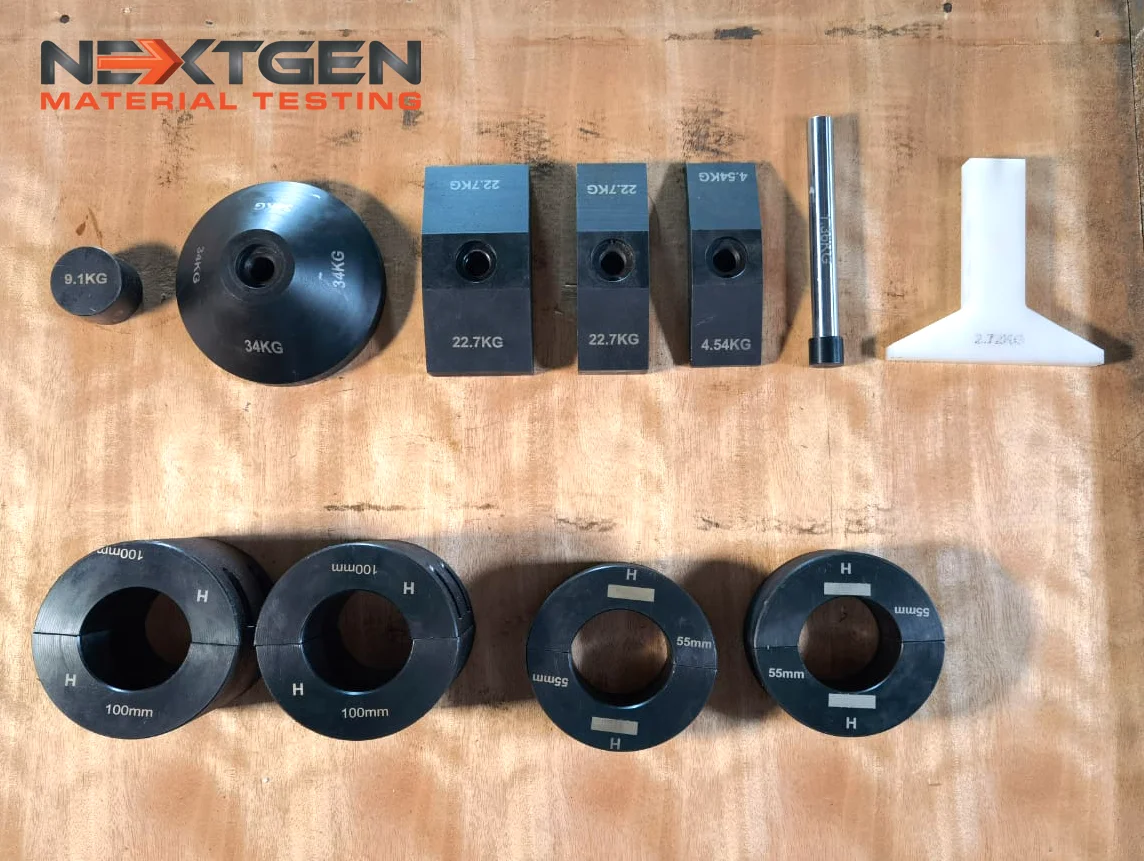
Impact Hammer: Varied Weights for Diverse Testing Needs
-
Heavy Hammers: 180kg, 272kg (600lb)
-
Light Hammers: 9.1kg, 34kg, 1.36kg, 4.54kg, 22.7kg, 2.72kg
These varied weight options for impact hammers fit a wide range of testing requirements. This enables researchers and engineers to accurately assess materials’ impact resistance by customizing the hammer weight to simulate different real-world impact scenarios.
UL Standard Impact Hammers: Offering Precision and Versatility
-
Right Cylindrical (Flat Face): Diameters of 1″, 1-1/8″, 2″, and 6″
-
Rectangular: Sizes of ¾” x 6” (Width is 3/8”) (Polyurethane), 2” x 6”, and 3” x 6”
By complying with UL standards, these hammers ensure testing alignment with recognized international benchmarks. The availability of different shapes and sizes facilitates nuanced and diverse testing environments to understand material resistance across different impact types.
Sample Seat: Customizable to UL Standards
The specifications of the DWT-1800 allow the customization of the sample seat according to customer requirements and in adherence to UL standards. This offers adaptability to diverse testing environments and compliance with government regulations.
Impact Hammer Knife Radius: Adapting to Specific Testing Needs
-
Available in R25mm or R50mm, and produced according to the customer’s requirement.
Enabling a knife radius choice, allows the DWT-1800 to adjust the impact testing procedure, ensuring that each test can be fine-tuned to simulate different real-world conditions.
Deviation Between Central Line of Drop Hammer and Sample Seat
-
≤±2.5mm
By maintaining a consistent and straight impact line, these minimal deviations ensure that impact tests are accurate and reliable.
Lifting Height of Falling Weight
-
Ranges from 100mm to 3350mm.
Precision of Falling Weight Lifting Height
-
±0.5%
This impressive precision in the falling weight and lifting height ensures the repeatability and reliability of impact tests.
Rockwell Hardness: Ensuring Durability of Testing Components
-
The drop hammer blade and the supporting table have a Rockwell hardness of HRC≥50.
Ensuring the durability and longevity of the machine components, this Rockwell hardness indicates resistance to wear and deformation, maintaining the integrity of the testing process over time.
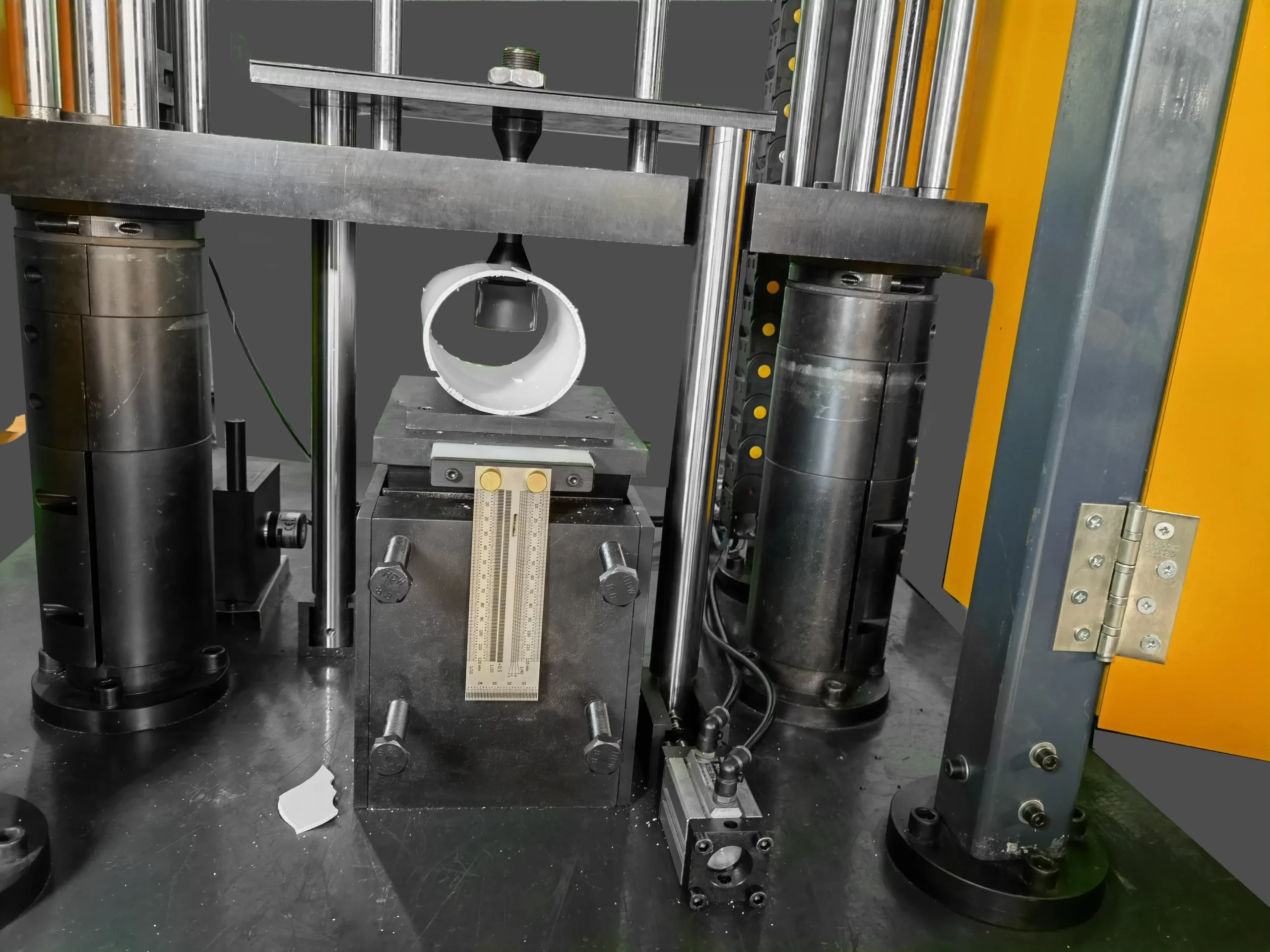
Machine Size and Weight: Designed for Practicality and Efficiency
-
Size: Approximately 1280×1300×4500mm
-
Weight: Approximately 2500kg
In addition to being solid and sturdy, the DWT-1800 is very space-efficient.
Analyzing the Working Principle and Structure of the DWT-1800 Drop Weight Impact Testing Machine
A combination of technological advancement and persistent requirements for material dependability defines the DWT-1800 Drop Weight Impact Testing Machine’s place within rigorous industrial applications. We will explore its structural and operational components in order to clarify its essential role in a number of industries and to identify the mechanisms integral to determining material integrity in the face of diverse impact conditions. This part of the article clarifies the capabilities, safety mechanisms, and versatility of the DWT-1800 across a range of research and industrial applications.
Fundamental Components
-
Guide Rail: Facilitates the linear fall of the hammer, contributing to test repeatability.
-
Base and Anvil: Provide a consistent and stable surface for accommodating various test materials.
-
Hammer: Critical for administering precise impacts during testing scenarios.
Functionality: Mechanized and Automated Operations
-
Manual Iron Block Safety Mechanism: Serves as a basic safety feature to support consistent and secure operation.
-
Microcomputer-Controlled Impact Energy Pre-Set System: Allows operators to set predetermined conditions, potentially reducing variable factors during testing.
Safety Aspects: Seeking to Minimize Operational Risks
-
Protective Devices: Intended to mitigate potential risks associated with flying debris during tests.
-
Ongoing Safety Monitoring: A standard feature intended to enhance operational safety during use.
Design Features: Considering Stability and Maintenance
-
Electric Lifting Mechanism: Designed to offer a stable base that may simplify the maintenance process by being positioned at a strategically suitable location on the frame.
Practical Applicability
Generally, the DWT-1800 is utilized in numerous industries where material impact resistance is crucial. For example, in the automotive industry, materials need to demonstrate a certain level of impact resistance to meet safety standards, especially considering that a number of studies, such as those conducted by organizations like the National Highway Traffic Safety Administration (NHTSA), highlight direct impacts as a significant percentage of automobile traffic accidents. The DWT-1800 can be used to collect relevant data to analyze and enhance material properties.
Utilization in Material Development
The DWT-1800 is used to test impact testing in a wide range of situations, providing data that could be vital in understanding material behaviors under different impact conditions. This might be particularly relevant in sectors where material innovation is continuously undertaken to enhance safety and performance characteristics.
Operation Steps of the DWT-1800 Impact Testing Machine
During the operation of the DWT-1800 Impact Testing Machine, the operator is greeted by a highly designed measurement and control system. To accurately display impact energy, this system is specifically designed to control the lifting height of the falling hammer and to display energy levels post-impact. The visual interface combines an accessible touch screen with a visually intuitive layout, ensuring ease of operation without compromising detailed and critical data.
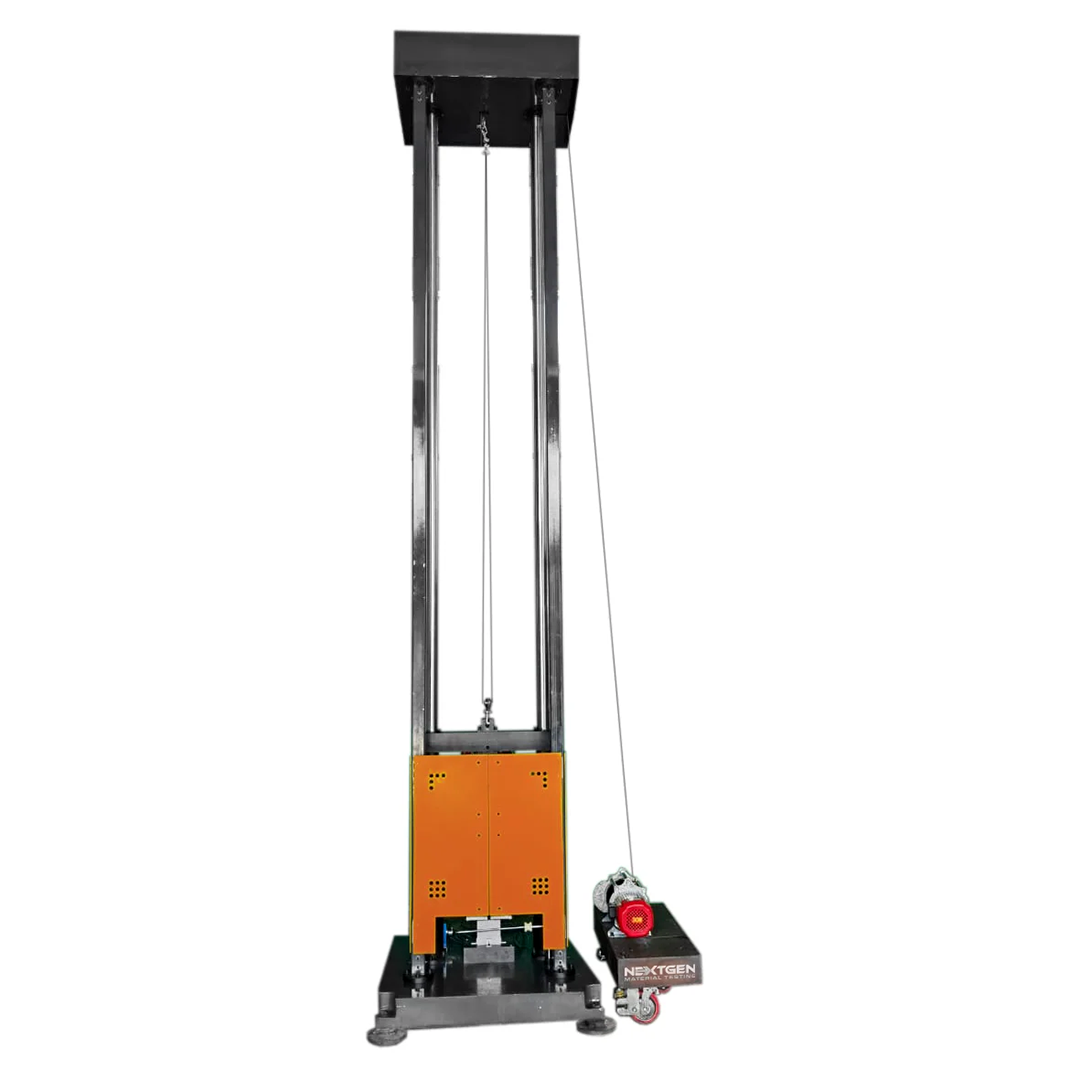
Moving a step further into operation, the user inputs specified parameters such as drop weight, local gravitational acceleration, and preset energy into the computer. This is done via an interactive display menu or designated command buttons. Interesting enough, the computer is programmed to automatically calculate the necessary impact height, which not only avoids manual calculations but also augments the machine’s operational efficacy. This calculated methodology in operation assures a high level of precision during testing, aligning the functionality with the user’s specific testing parameters and ensuring accurate, replicable results.
The process advances with the computer signaling the control switch of the hammer lift motor upon the user’s activation of the raise button. The system ensures that the hammer, while being lifted, automatically stops at the pre-calculated height, eliminating any possibility of error or inaccuracy in the testing process. Once positioned, the material undergoes an impact test upon the user clicking the “Impact” button. This is where the hammer is systematically released to interact with the material.
It’s noteworthy that the DWT-1800 offers adaptability by allowing customization based on specific user requirements. The machine offers variations and adjustability in impact energy, weight, and lift heights. This offers a versatile application across a wide range of testing scenarios and material types. The DWT-1800 is not only a tool for precise and calculated impact testing but also a flexible device capable of accommodating diverse industrial needs and material testing parameters, substantiating its applicability across multiple research and industry sectors.
The Class J Impact Testing System – For plastic & rubber impact testing
The Class J – Charpy and Izod Automatic Impact Testing System is another specialized tool designed to conduct impact tests, with a particular focus on testing plastics and rubber specimens. With its interchangeable pendulum and shaftless encoder, this machine provides an ideal solution for impact testing. It complies with several standards including ISO 179, ISO 180, and ASTM D256.
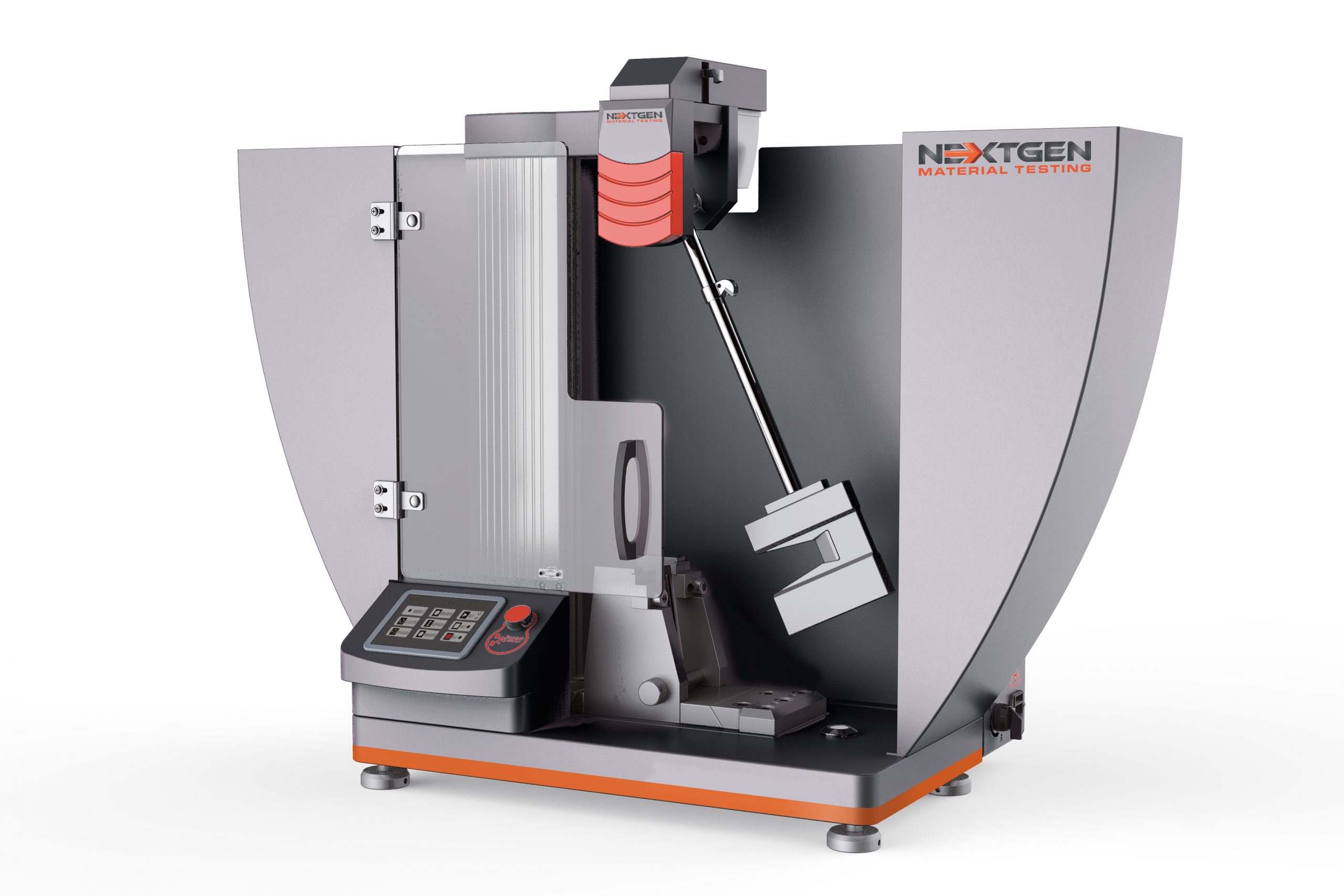
The Class J Impact Testing System offers a distinct and specialized approach, particularly towards plastics and rubber specimens.
This system is meticulously crafted to perform both Izod and Charpy impact tests, collecting critical data regarding the material’s response to impact forces. It is equipped with tensile impact pendulums and fixtures that allow tests on plastic films and sheets. It offers a cost-effective configuration capable of addressing Charpy tests from 1J to 50J and Izod tests from 1J to 22J. This variety not only highlights its versatility in dealing with different energy levels but also underscores its specificity to the unique demands of plastic and rubber material testing.
Among the most noteworthy features of the Class J Impact Testing System are high-resolution capabilities through the use of a shaftless encoder, ensuring a precise angle resolution of 0.045°, and minimizing energy losses due to its ability to rotate without friction. Moreover, its touch screen display shows specimen dimensions, pendulum energy, units, and calibration data. It also intuitively presents critical test results, such as absorbed energy and impact toughness. Moreover, the system accommodates interchangeability of the pendulum to match different testing requirements, such as Charpy, Izod, and tensile impact tests.
Its rotating design ensures quick and accurate specimen center alignment for Charpy tests, while its structural configuration – a single column structure – ensures a broad test space, allowing for the potential installation of low-temperature impact test accessories in the future. The design thinking behind this system encapsulates not only the immediate testing needs but also envisions the evolving requirements of ongoing research and industry applications.
In both the DWT-1800 and the Class J Impact Testing System, we can see a comprehensive and adept approach towards material testing – each presenting its unique capabilities, applicabilities, and operational methodologies, serving varied needs across different industrial and research spheres. While they each provide distinct functionalities and cater to an array of material types, both systems underline the critical role of impact testing in assuring material reliability and integrity across diverse applications, ensuring that materials, once implemented, perform with resilience and durability.
Why the DWT-1800 Drop Weight Impact Testing Machine is the Right Choice
In conclusion, the DWT-1800 Drop Weight Impact Testing Machine distinguishes itself from other impact testing machines on the market due to its precise and reliable measurement and control systems. With a focus on impact resistance testing for numerous materials, the DWT-1800 characterizes itself through its computer-controlled operations, providing accurate and repeatable results by automating the calculation of impact height based on user-defined parameters like drop weight and preset energy. Furthermore, its ability to precisely display impact energy and control the lifting height of the falling hammer enhances the machine’s reliability in generating data.
Ensuring operator safety and efficiency, the DWT-1800 also features user-friendly touch screen interfaces and is carefully structured to optimize functionality, mitigating operational complexities. The machine not only supports explicit requirements for standard compliance testing but also extends its applicability through customizable solutions, thereby adapting to varied impact energy, weight, and lift height specifications.
Act now! If the DWT-1800 Drop Weight Impact Testing Machine suits your testing needs or if you have any questions about its functionalities, do not hesitate to contact us or request an online quote. We are here to assist with your impact testing requirements and help you navigate through the specifics of our system to ensure it meets your precise needs.
